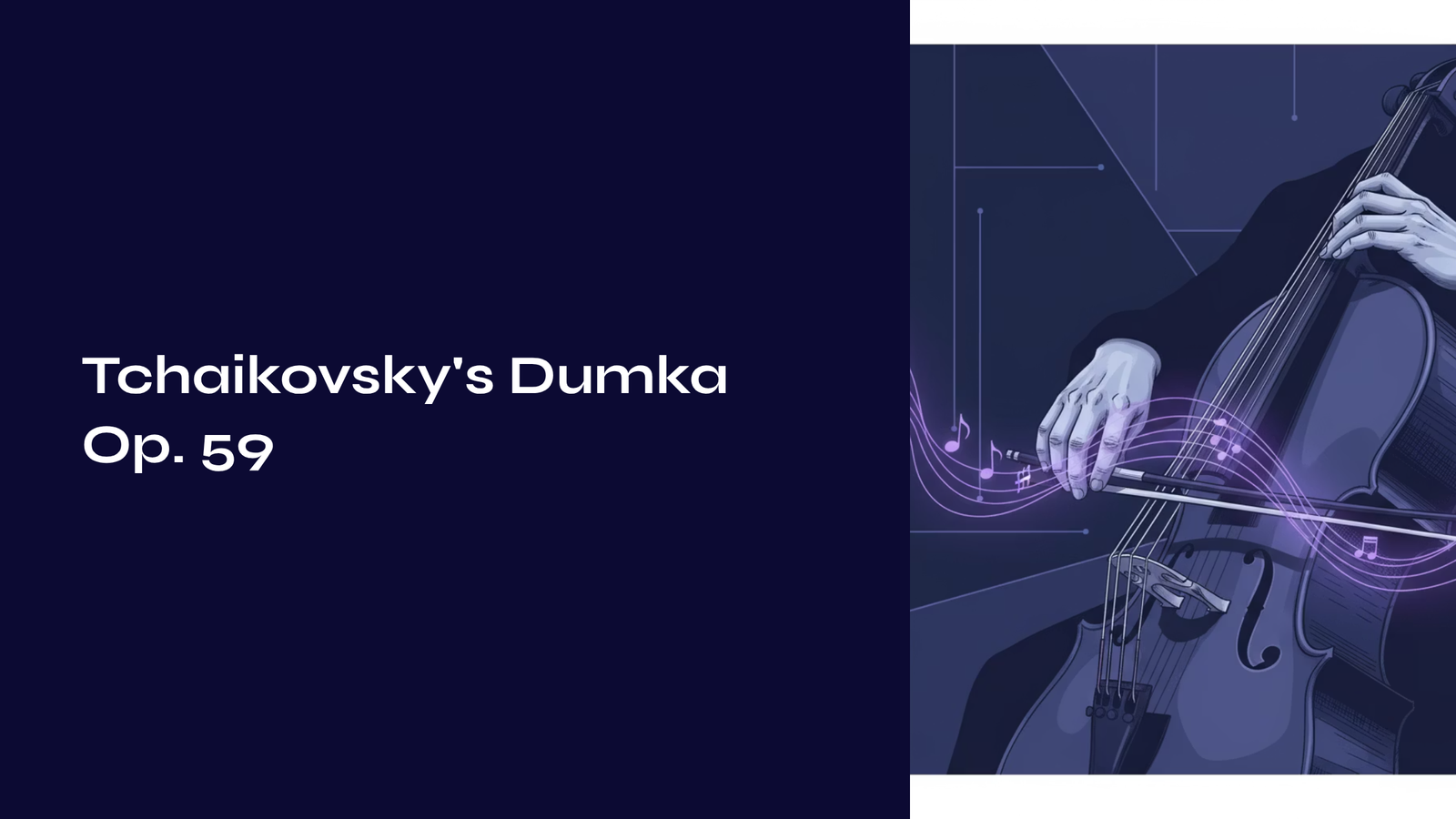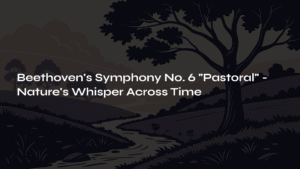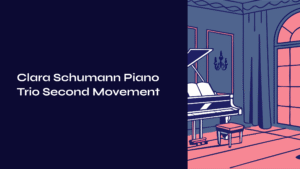Table of Contents
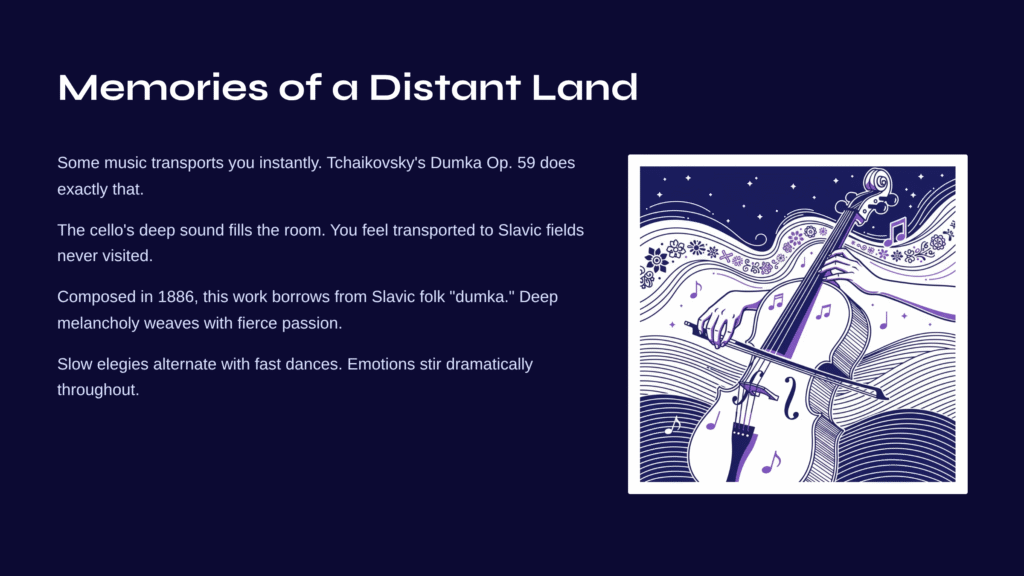
Memories of a Distant Land Flowing Over the Cello Strings
Some music, the moment you hear it, takes you somewhere else. That’s what happened when I first heard Tchaikovsky’s Dumka Op. 59. As the low, deep sound of the cello filled the room, I felt as if I were standing in some Slavic field I’d never visited. The wind blew, and I could almost hear someone’s ancient song.
This piece is not just a simple cello work. Composed by Tchaikovsky in 1886, this work borrows from the Slavic folk form called “dumka,” weaving deep melancholy and fierce passion into a single flow. Slow elegies and fast dances alternate, stirring the listener’s emotions. Have you ever experienced such dramatic changes while listening to music that you wondered, “Is this really just one piece?” This is exactly that kind of work.
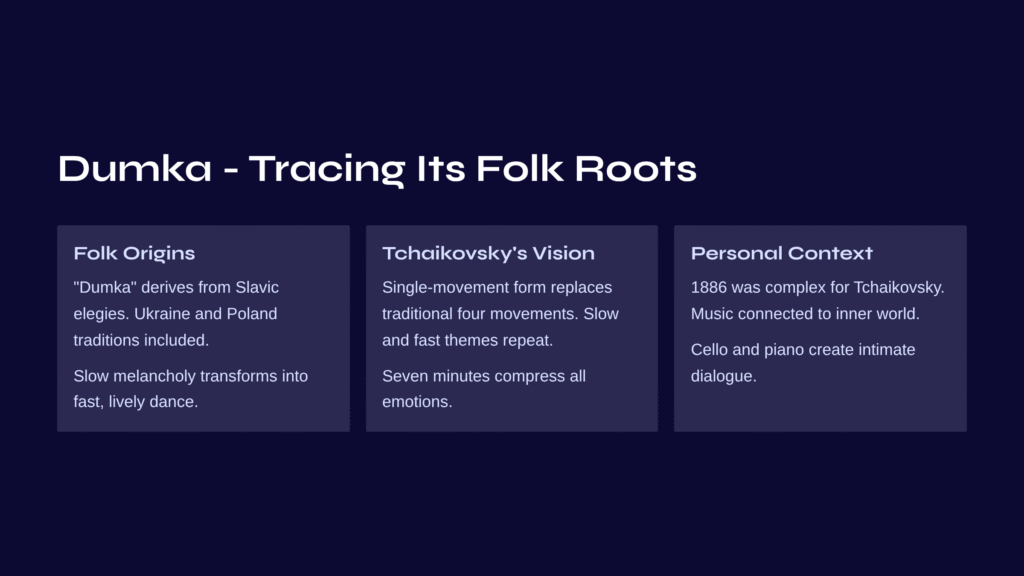
Dumka – Tracing Its Folk Roots
“Dumka” is a musical form derived from traditional elegies of Slavic regions, including Ukraine and Poland. Originally, it begins with a slow, melancholic melody and suddenly transforms into a fast, lively dance. This dramatic contrast reflects the Slavic spirit—where deep sorrow and suppressed joy coexist.
Tchaikovsky cleverly reinterpreted this folk style. Instead of the traditional four-movement structure, he chose a single-movement form where slow themes (A) and fast themes (B) repeat and vary. Thus the piece unfolds like a short epic poem. From sorrow to hope, back to regret, and finally to resignation. All emotions are compressed into about seven minutes.
The year 1886, when Tchaikovsky wrote this piece, was a personally complex time for him. His music was always connected to his inner world, and this Dumka was no exception. The intimate instrumentation of cello and piano feels like a deep conversation between two people. When one expresses sorrow, the other consoles or shares in the anger. The language of that dialogue was Slavic folk melody.
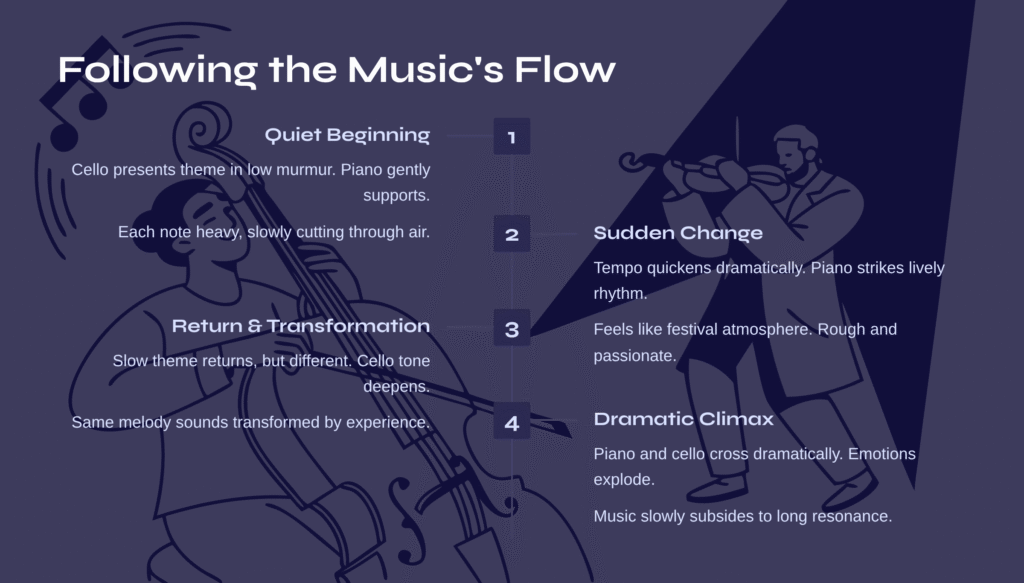
Slow Elegy, Then Fierce Dance – Following the Music’s Flow
Listening to this piece, it’s like riding waves of emotion. It begins quietly. The cello presents the theme in a low murmur, and the piano gently supports it. The cello melody at this moment is truly poignant. It’s as if someone is sighing while recalling a distant past. Each note is heavy, slowly cutting through the air and settling down.
But as the piece progresses, the atmosphere suddenly changes. The tempo quickens, and the piano begins to strike a lively rhythm. The cello leaps up to follow. This section feels like being in the middle of a festival. As if trying to forget sorrow, or perhaps to hide it, the music charges forward, rough and passionate. I believe this moment is the essence of the Dumka. The music proves that sorrow and joy can coexist, and that they’re not really far from each other.
And then, the slow theme returns. But this time it’s different from the beginning. The cello’s tone deepens, and the piano’s chords grow heavier. It’s as if a person who has come full circle now knows more. In this recapitulation, I often find myself holding my breath. It’s the same melody, yet why does it sound so different? It’s probably because we’ve already experienced the fast dance. That contrast makes the slow theme even more poignant.
The climax of the piece comes at the point where piano and cello cross dramatically. When the piano harshly strikes chords, the cello rises above them with a melody like a cry. This moment is truly breathtaking. The two instruments push against each other, and emotions seem to explode. And then, the music slowly subsides. When the last note fades, only a long resonance remains in the room.
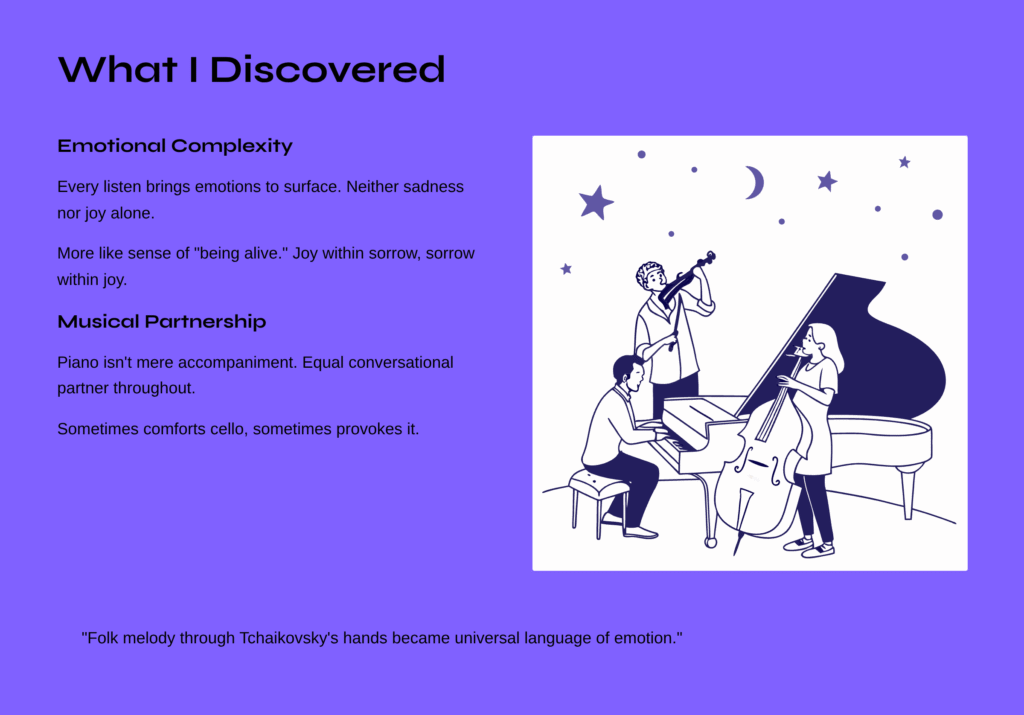
What I Discovered in This Music
Every time I listen to this piece, I feel some emotion within me rising to the surface. It’s neither exactly sadness nor joy. It’s more like a sense of “being alive.” The Dumka doesn’t define emotion as one thing. There is joy within sorrow, and sorrow within joy. Just like our lives.
What Tchaikovsky showed in this piece is not mere technique. He demonstrates how close the cello can be to the human voice, and how diverse a rhythmic world the piano can unfold. I’ve become particularly attentive to the piano’s role. In many cello pieces, the piano simply accompanies, but in this work, it’s almost an equal conversational partner. Sometimes it comforts the cello, sometimes it provokes it.
And this music reminds me that “folk” is not merely a relic of the past. The Slavic folk melody, through Tchaikovsky’s hands, became a universal language of emotion. I’ve never been to Slavic regions, nor do I know their languages, but when I listen to this music, I feel as if I understand something. Is this what it means when people say music transcends borders?
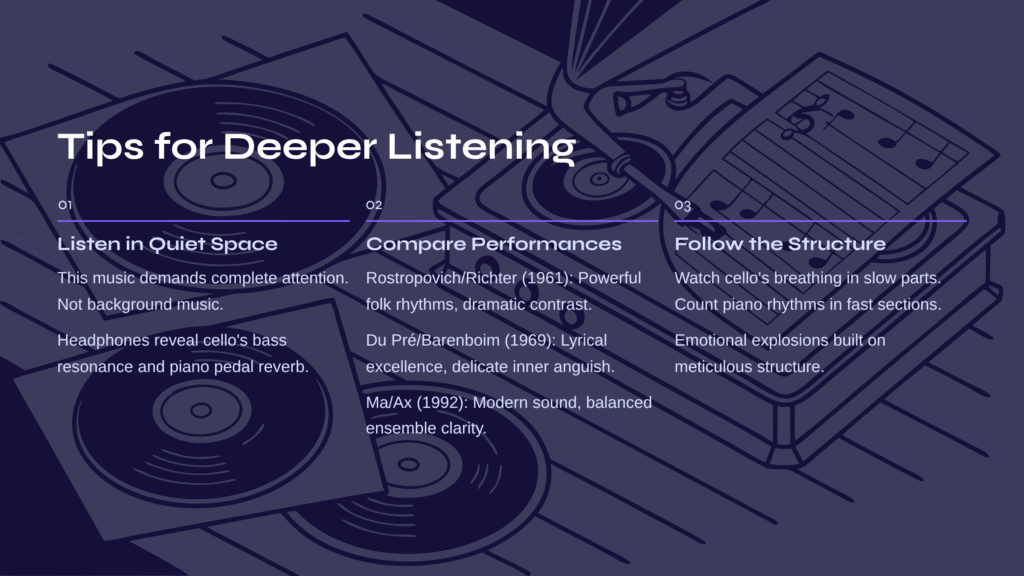
A Few Tips for Deeper Listening
If you’re listening to this piece for the first time, here’s what I’d recommend. First, listen in a quiet space. This music is not background music. It demands your complete attention. If you listen with headphones, you’ll feel more vividly how the cello’s bass resonates and what the piano pedal’s reverb feels like.
Second, compare different performance versions. Rostropovich and Richter’s 1961 recording powerfully expresses the folk rhythms with impressive dramatic contrast. Meanwhile, Jacqueline du Pré and Daniel Barenboim’s 1969 recording excels in lyricism and delicately depicts inner anguish. Yo-Yo Ma and Emanuel Ax’s 1992 recording offers modern sound quality and balanced ensemble, clearly conveying the contrast of each phrase. The same piece unfolds entirely different stories depending on the performers.
Third, pay attention to the structure of the piece. Follow the cello’s breathing when the slow parts come, and count the piano’s rhythms when the fast parts appear. Then you’ll understand how precisely this piece is designed. Even the parts that seem like emotional explosions are actually built upon meticulous structure.
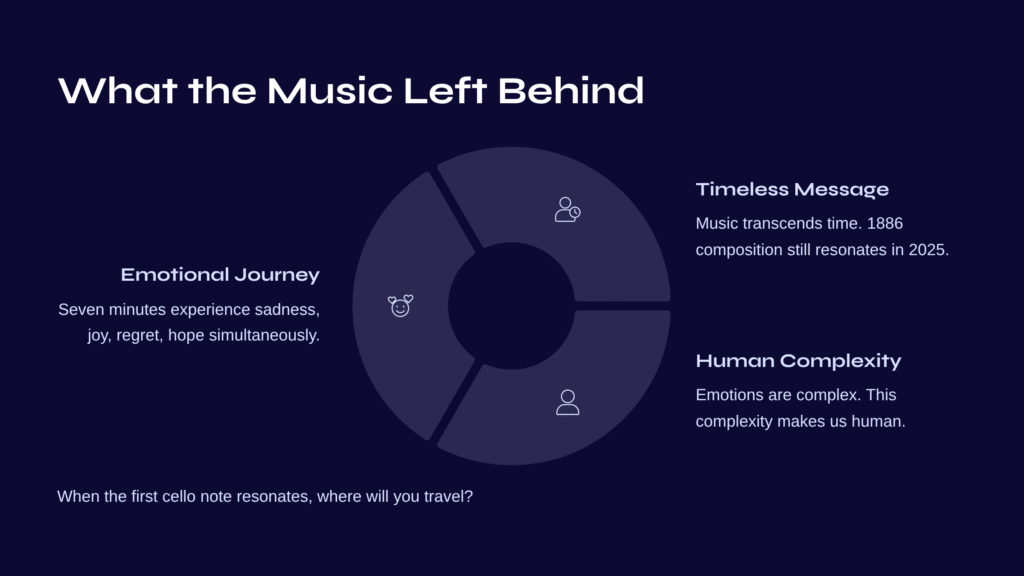
What the Music Left Behind
Tchaikovsky’s Dumka Op. 59 is a short but intense work. In about seven minutes, we experience sadness and joy, regret and hope, all at once. And even after the piece ends, the resonance lingers long.
Every time I listen to this piece, I think about the message Tchaikovsky wanted to convey to us. Perhaps it’s that “emotions are complex,” and that “this complexity is what makes us human.” People say music transcends time. Seeing this piece written in 1886 still resounding in my room in 2025, that statement doesn’t seem wrong.
I hope you’ll listen to this music too. And discover your own Dumka. When the first note of the cello resonates, where will you travel to?
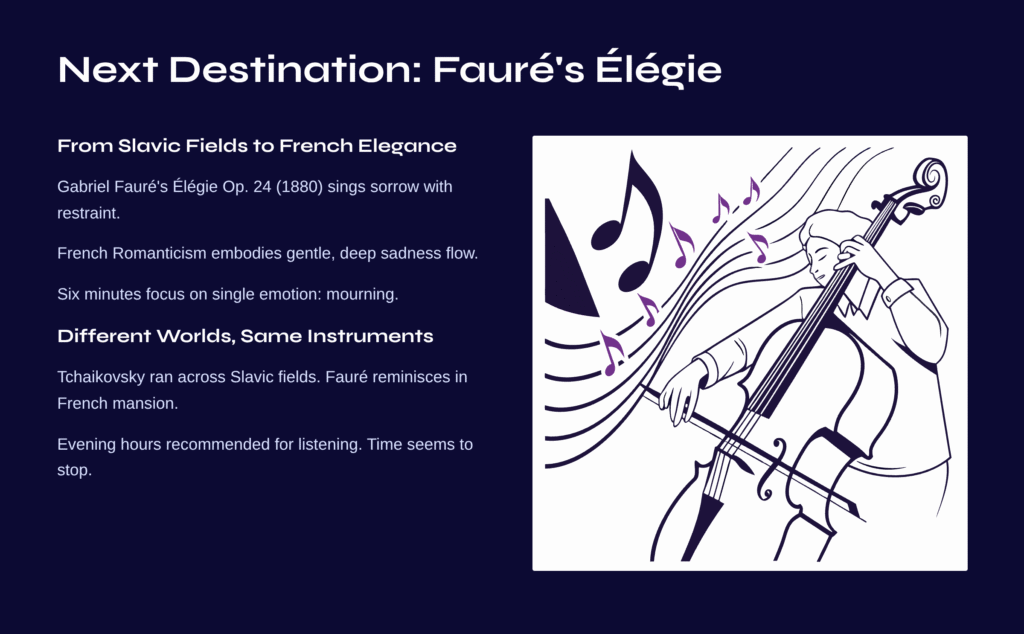
Next Destination: Fauré’s Élégie – Into Another World of Elegy
If Tchaikovsky’s Dumka showed the violent emotional contrasts of the Slavic spirit, let us now cross over to France. Gabriel Fauré’s Élégie for Cello and Piano Op. 24, composed in 1880, sings of sorrow in an even more restrained and elegant manner than Tchaikovsky.
Fauré’s Élégie embodies the essence of French Romanticism. If Tchaikovsky’s Dumka is about emotional explosion and contrast, Fauré’s Élégie is a gentle yet deep flow of sadness. The cello melody flows down like someone’s quiet tears, and the piano softly embraces that sorrow. This piece focuses on a single emotion—mourning—for about six minutes.
If you were captivated by the dramatic contrasts of the Dumka, the quiet beauty of the Élégie will approach you with a completely different charm. Both pieces use the same instrumentation of cello and piano, yet the results are surprisingly different. If Tchaikovsky ran across Slavic fields, Fauré quietly reminisces in the drawing room of a French mansion.
When listening to Fauré’s Élégie, I recommend the evening hours, when the outside grows dark. When the cello’s low melody fills the room and the piano’s arpeggios subtly spread, you’ll experience a moment when time seems to stop. This is a different kind of time transcendence from the Dumka.
Next time, let’s journey together to this French elegy, Fauré’s Élégie. Same instruments, different world. That’s the charm of the infinite journey that classical music offers.
